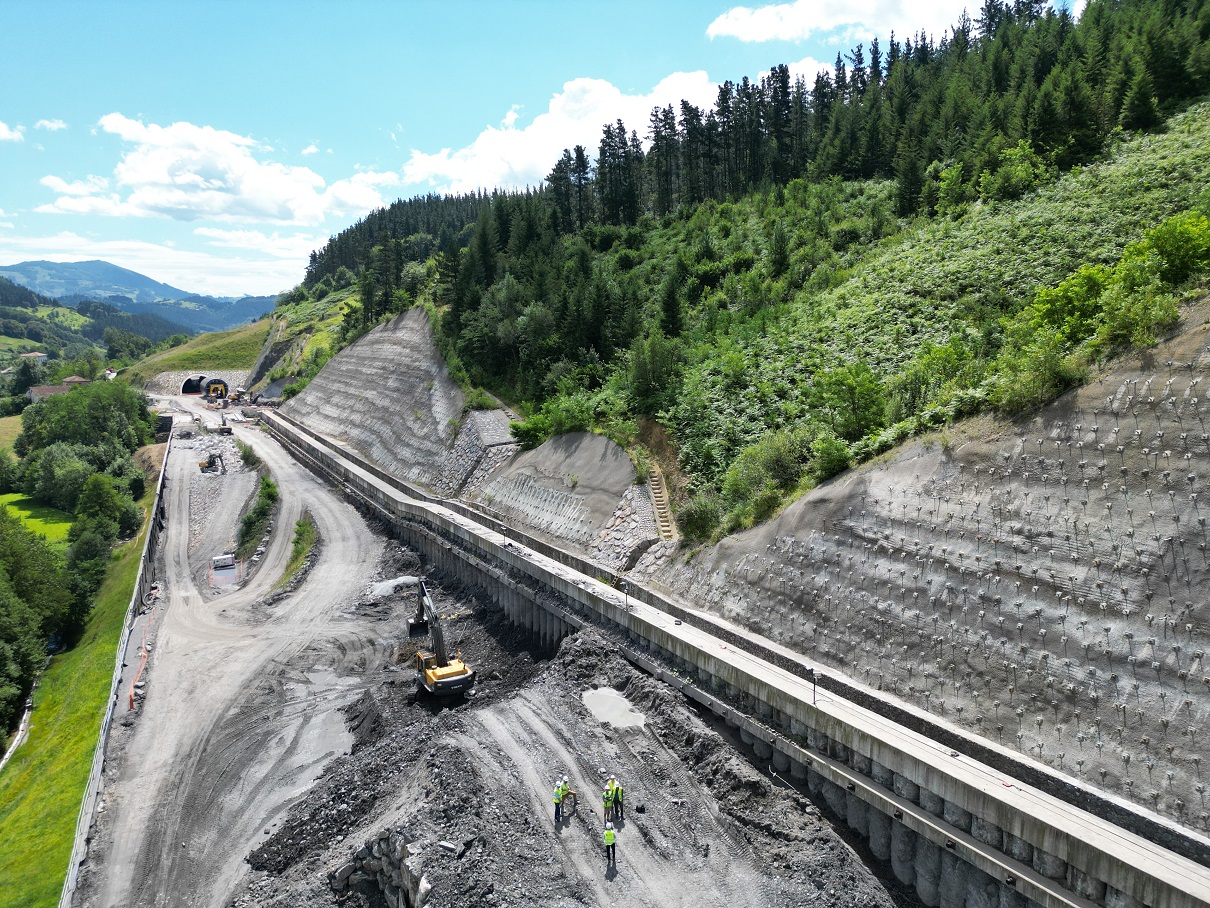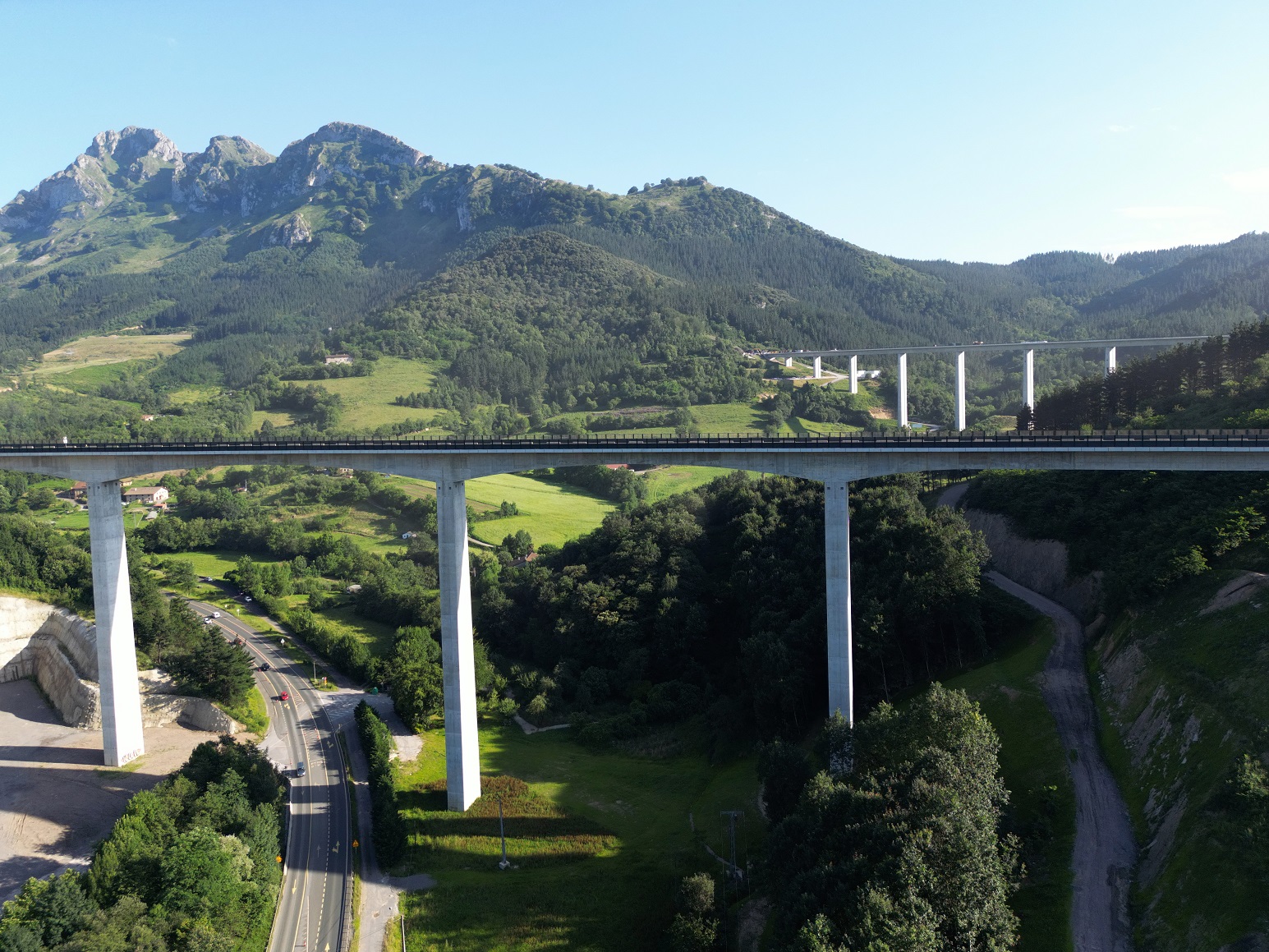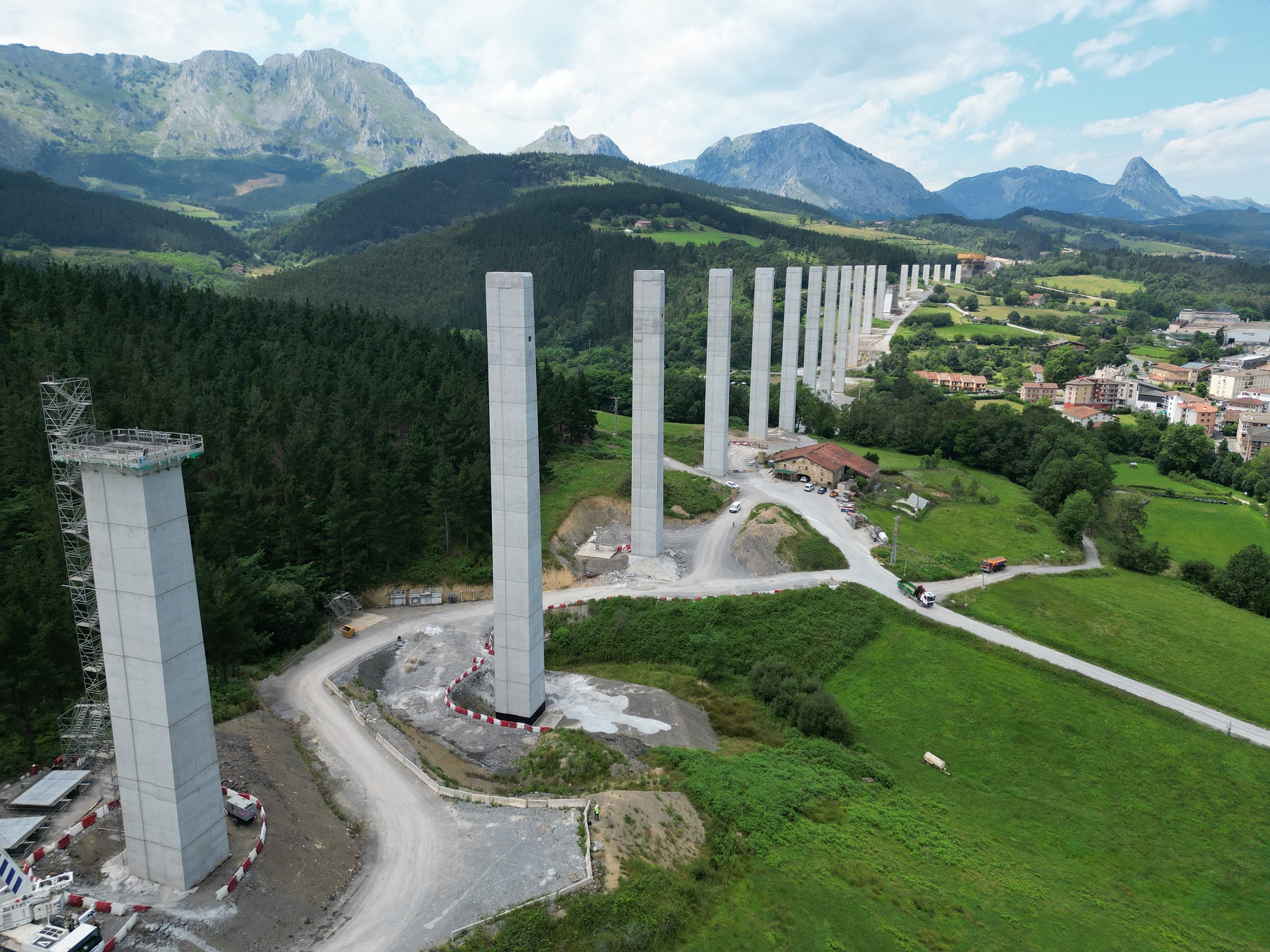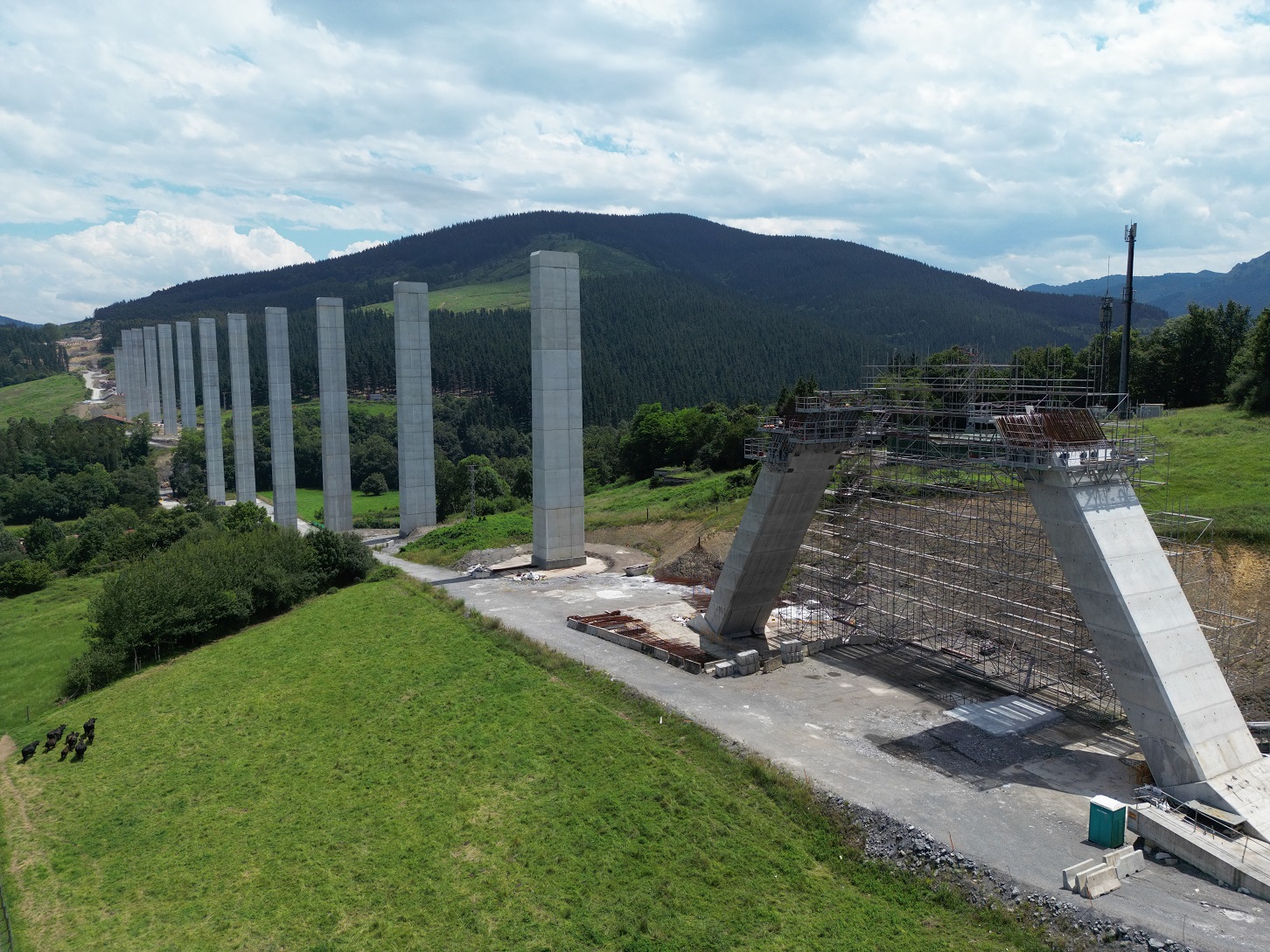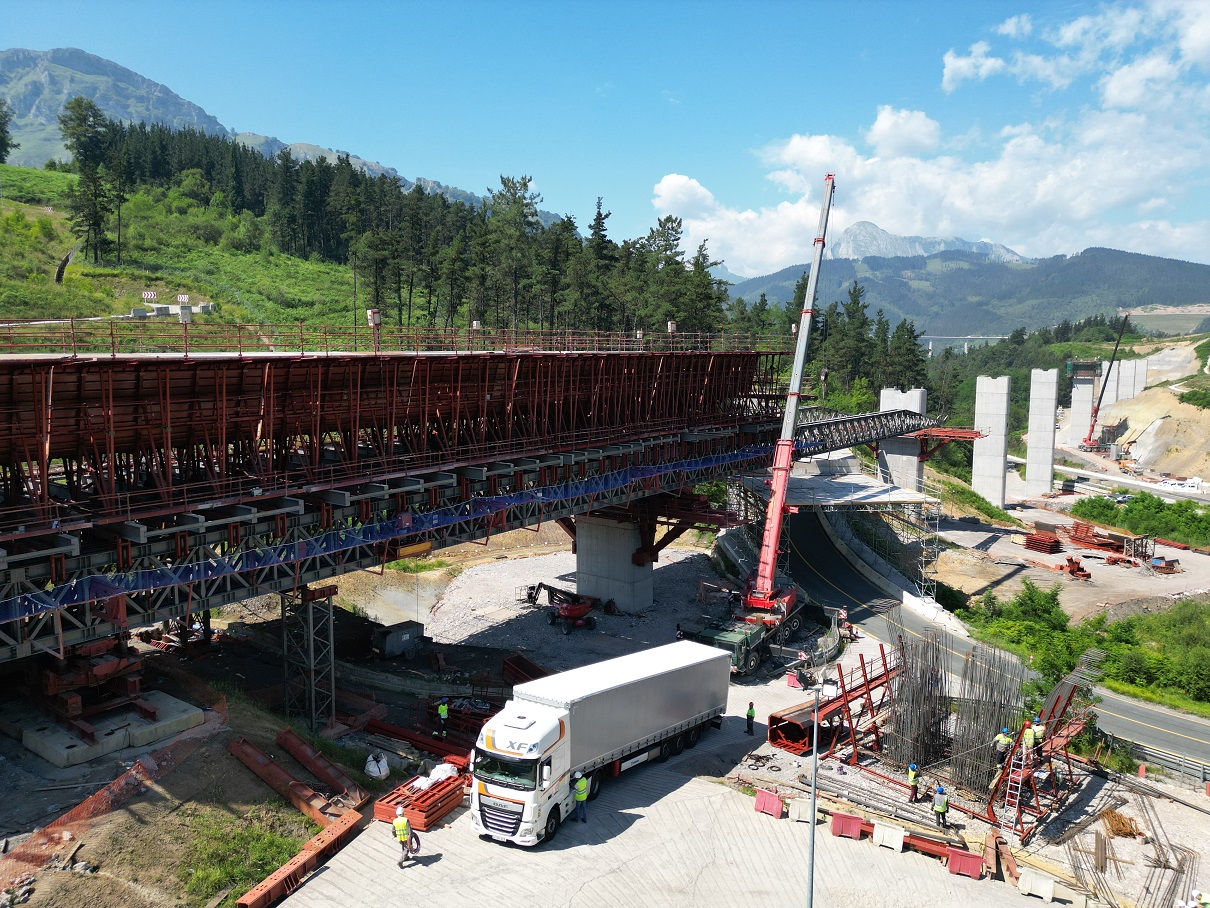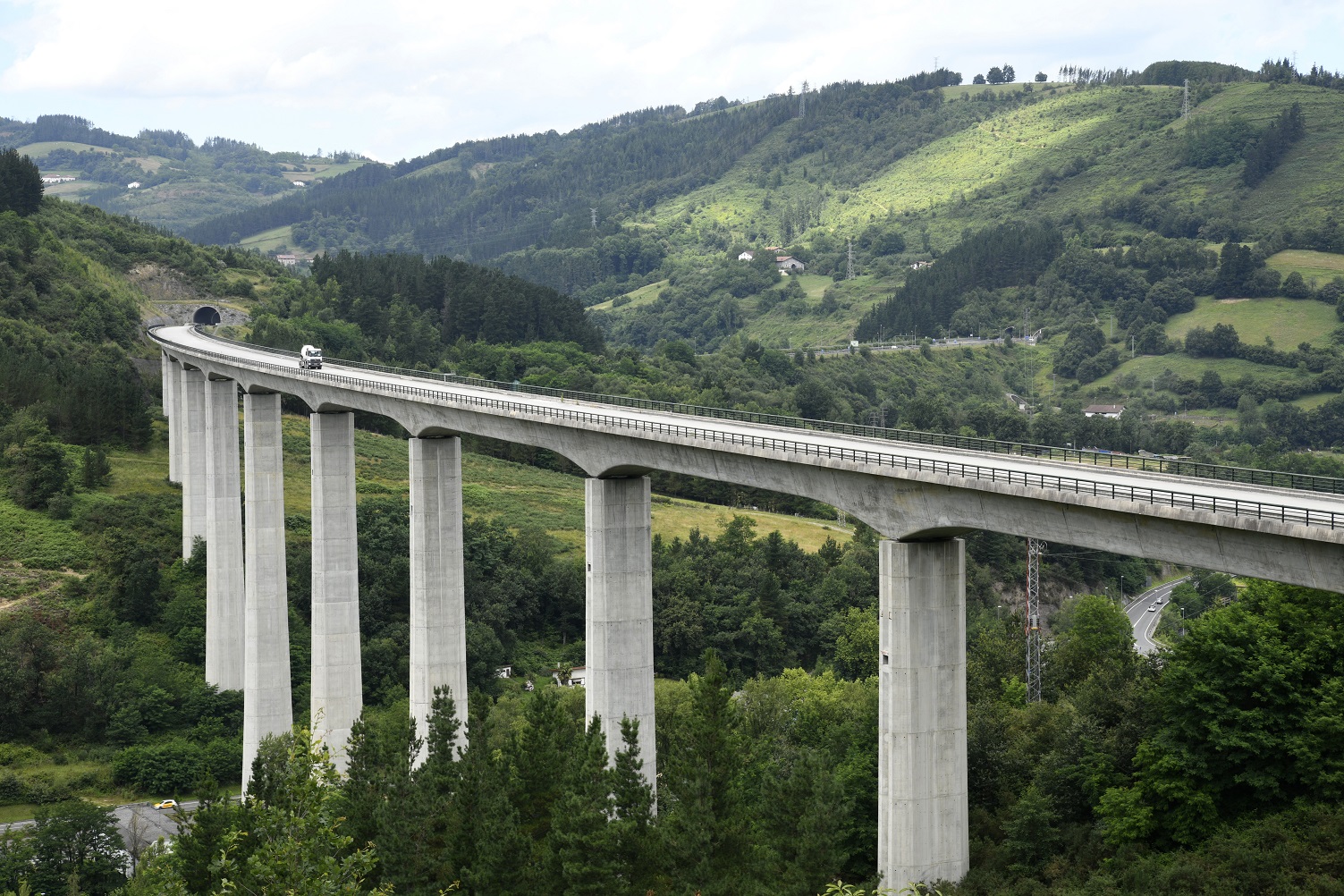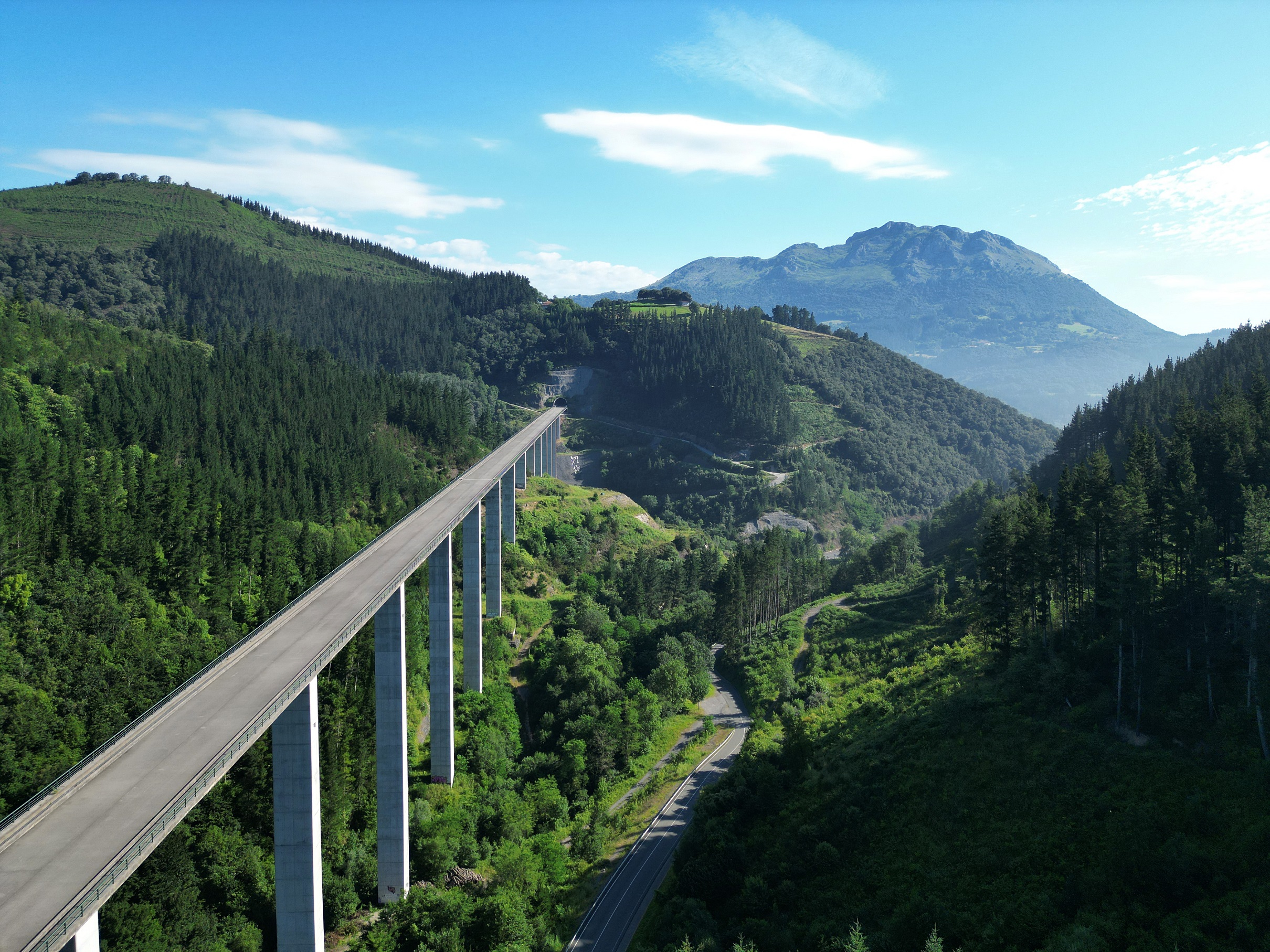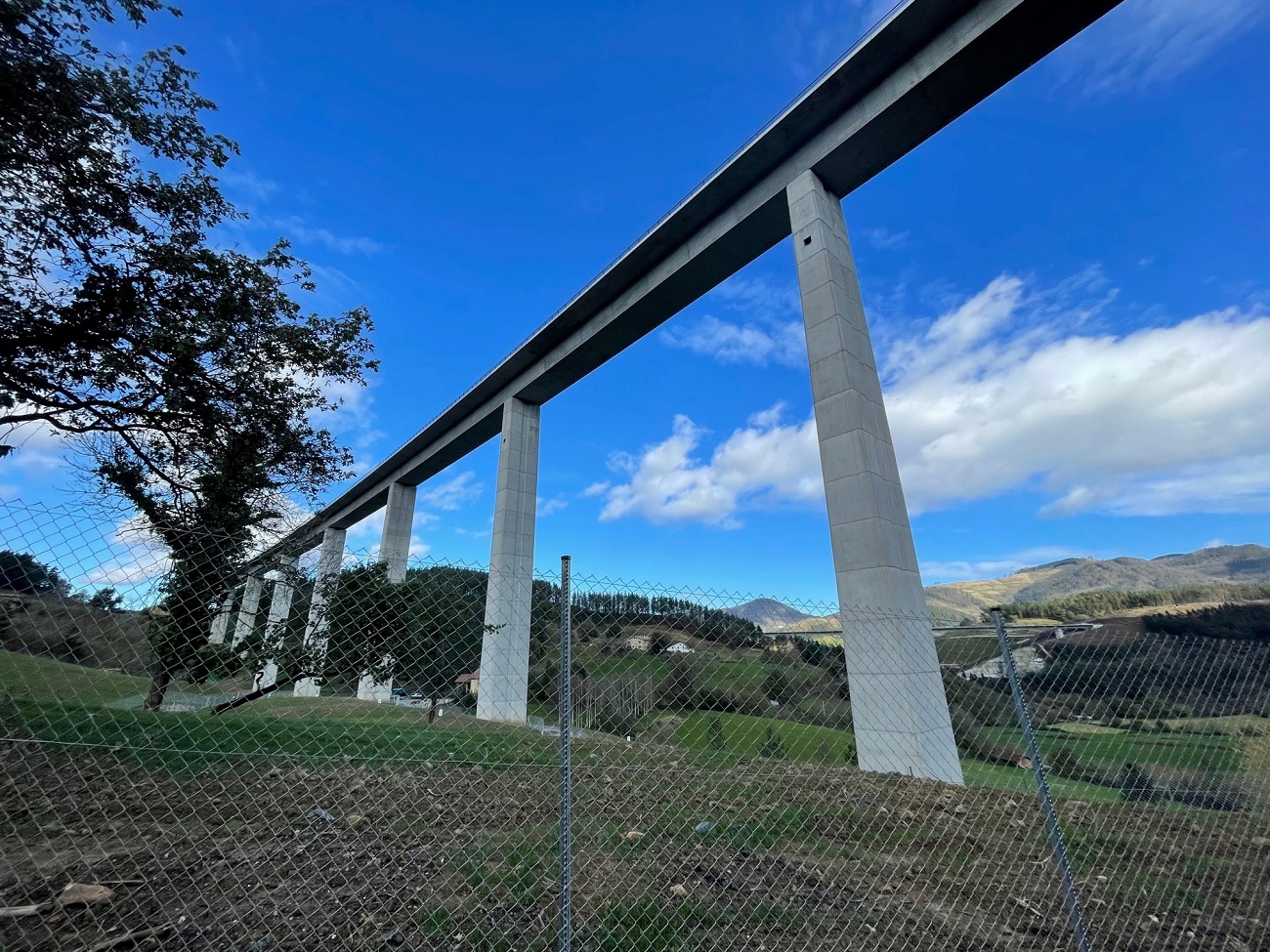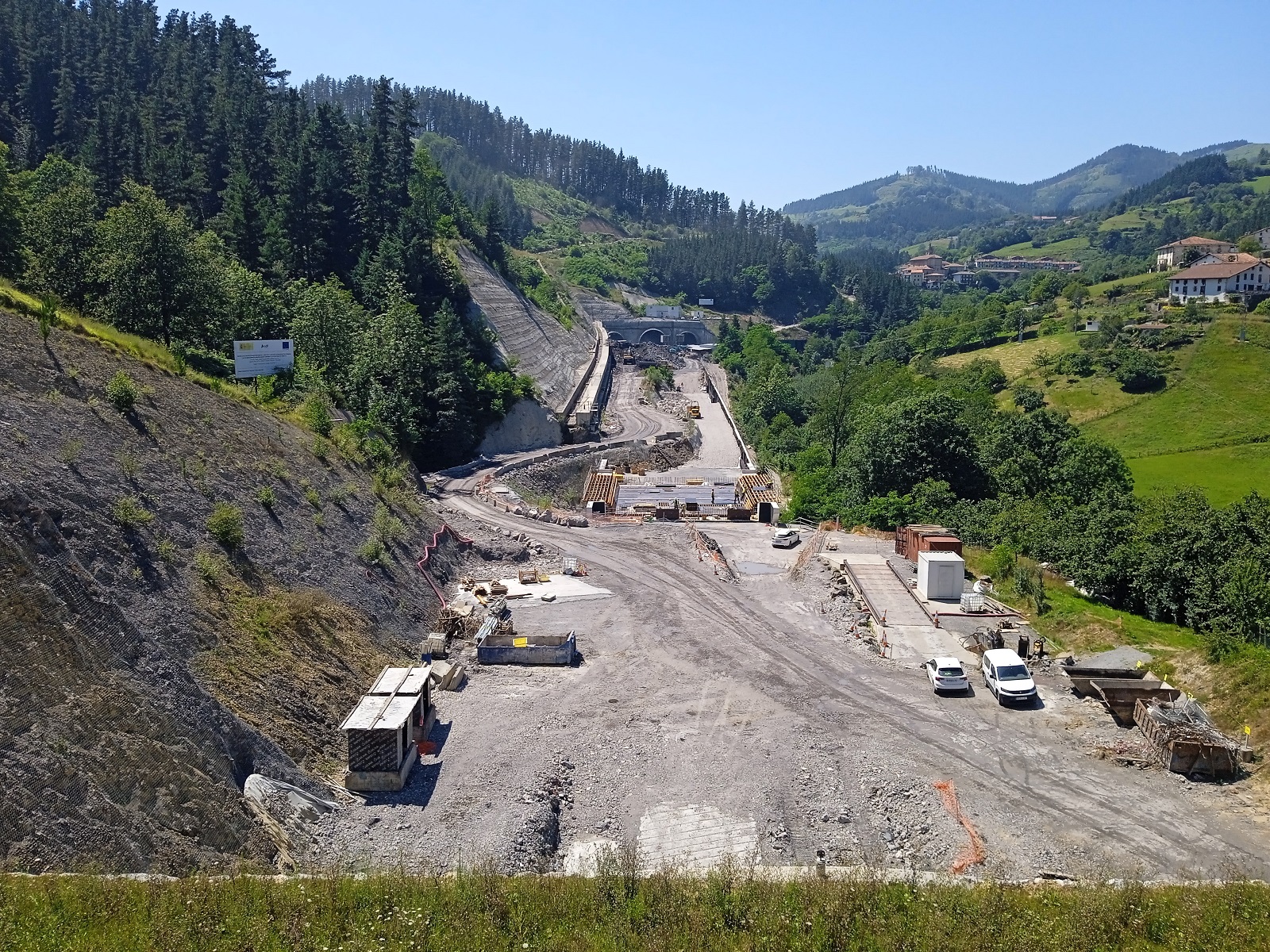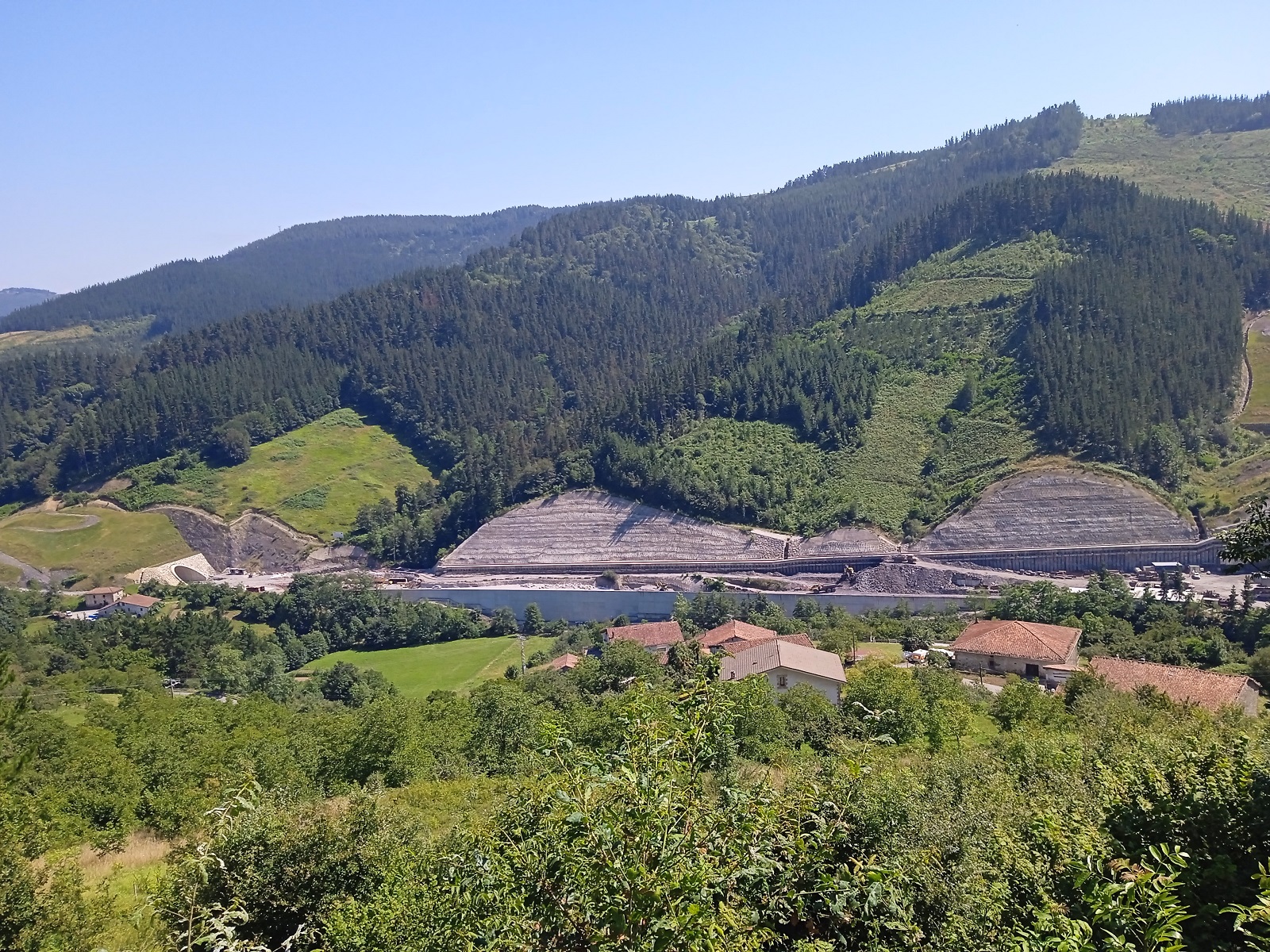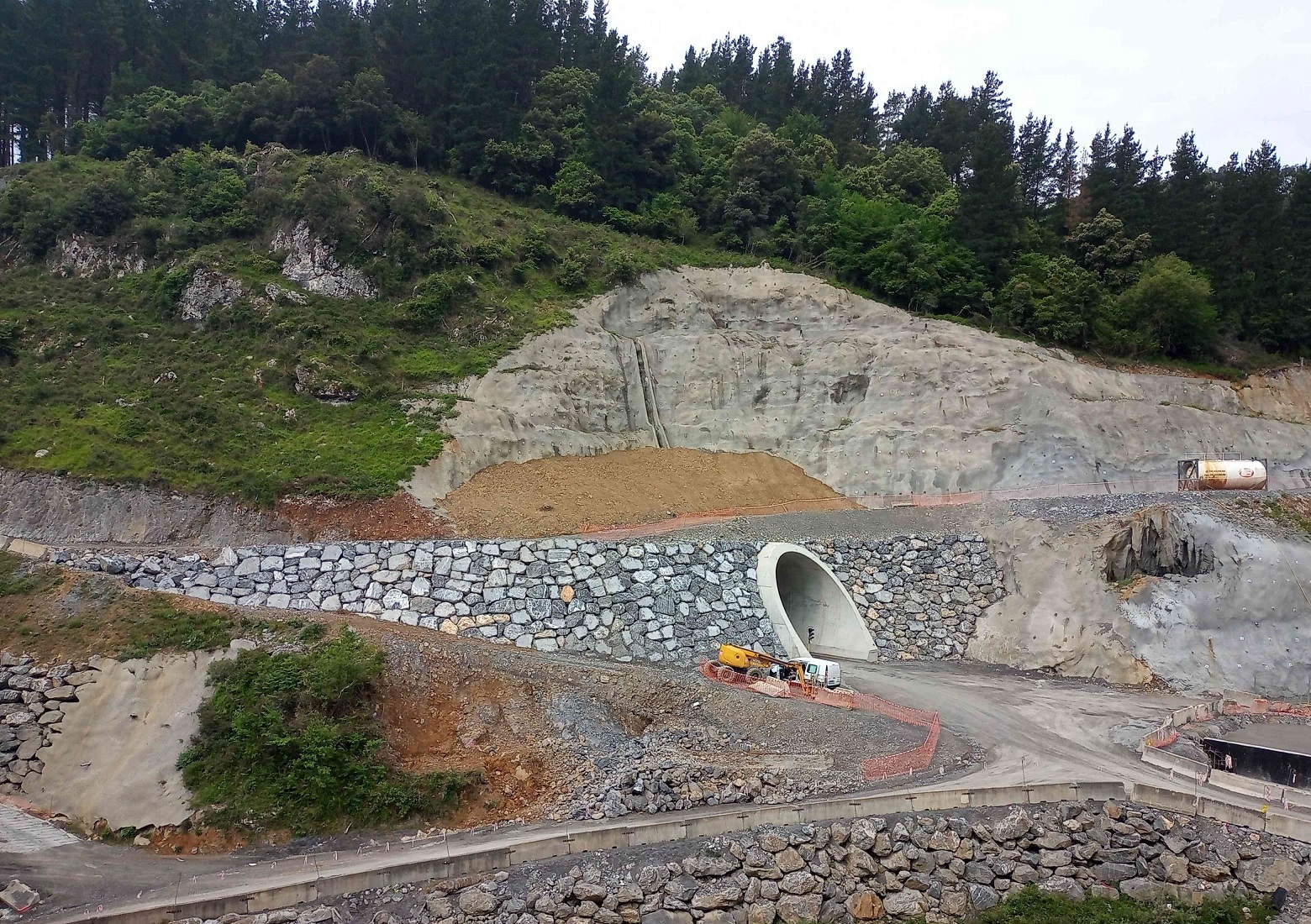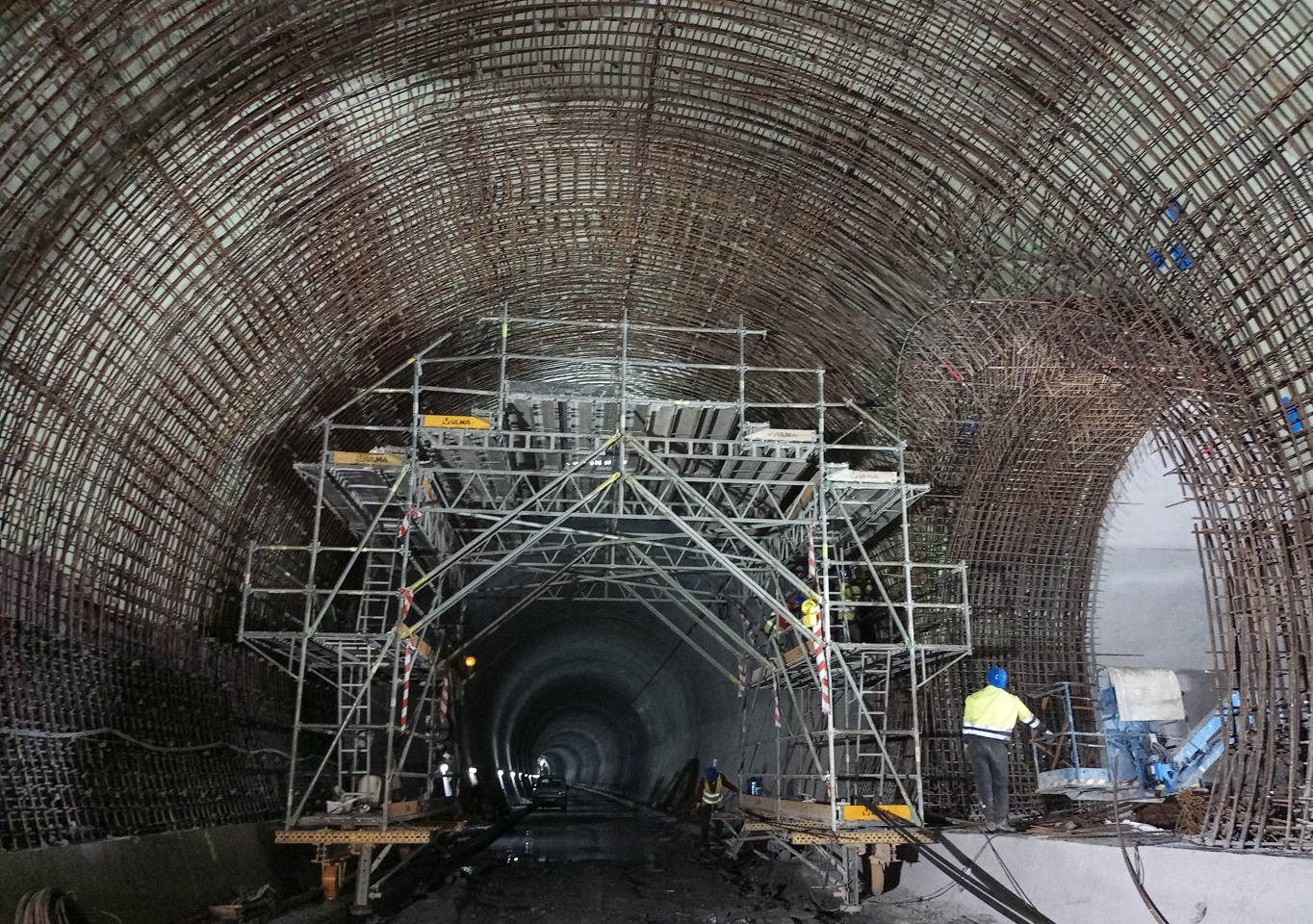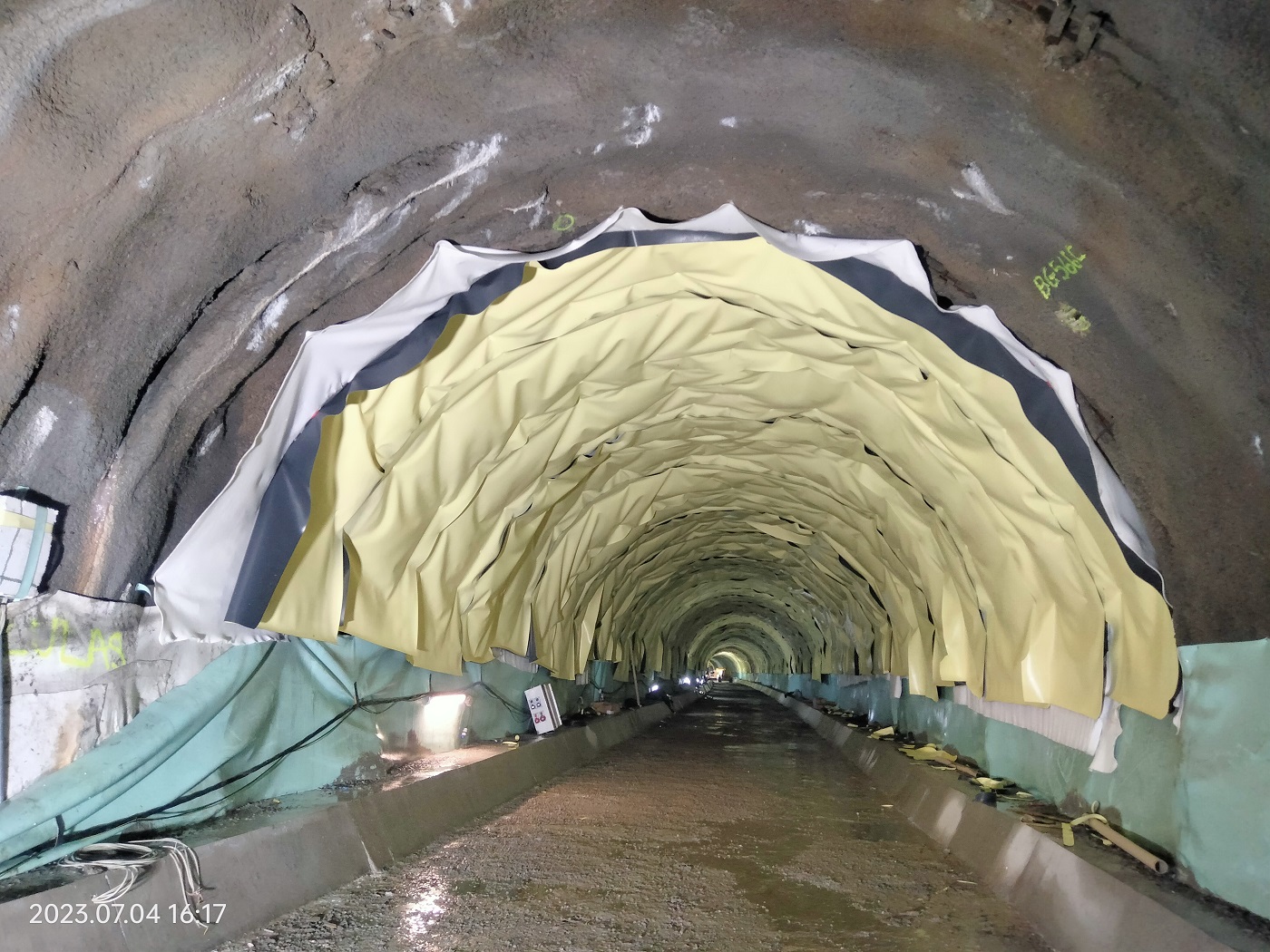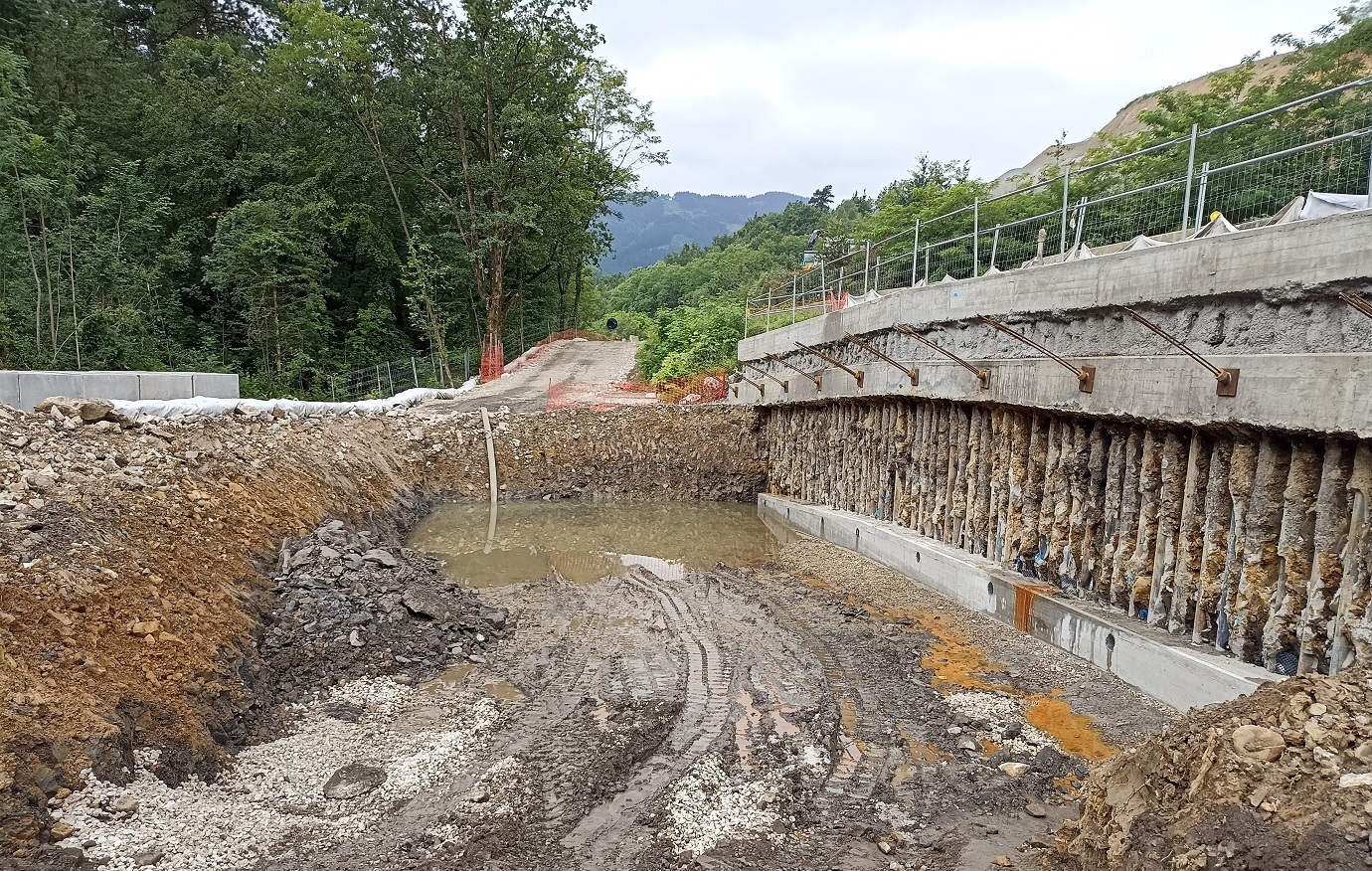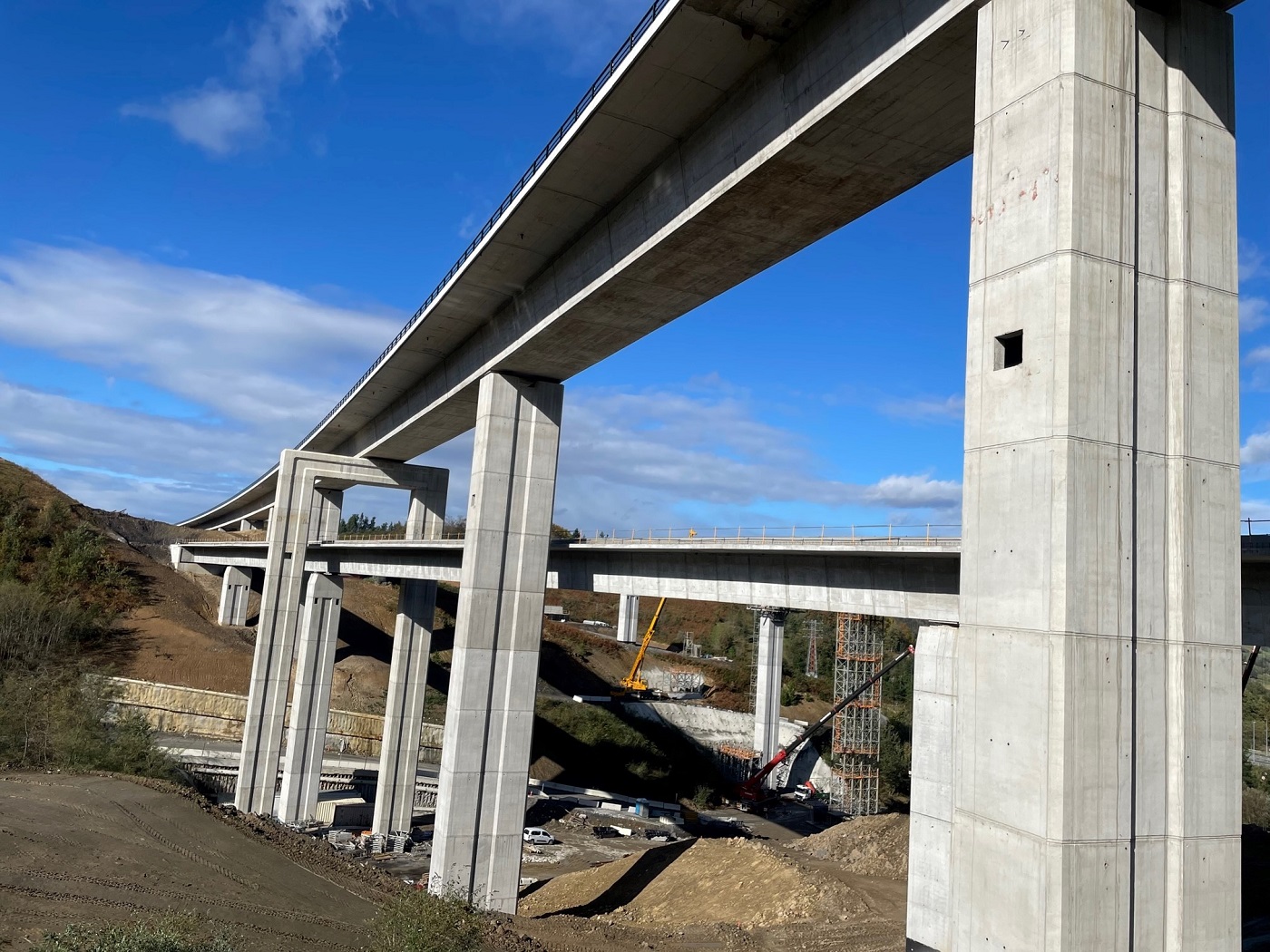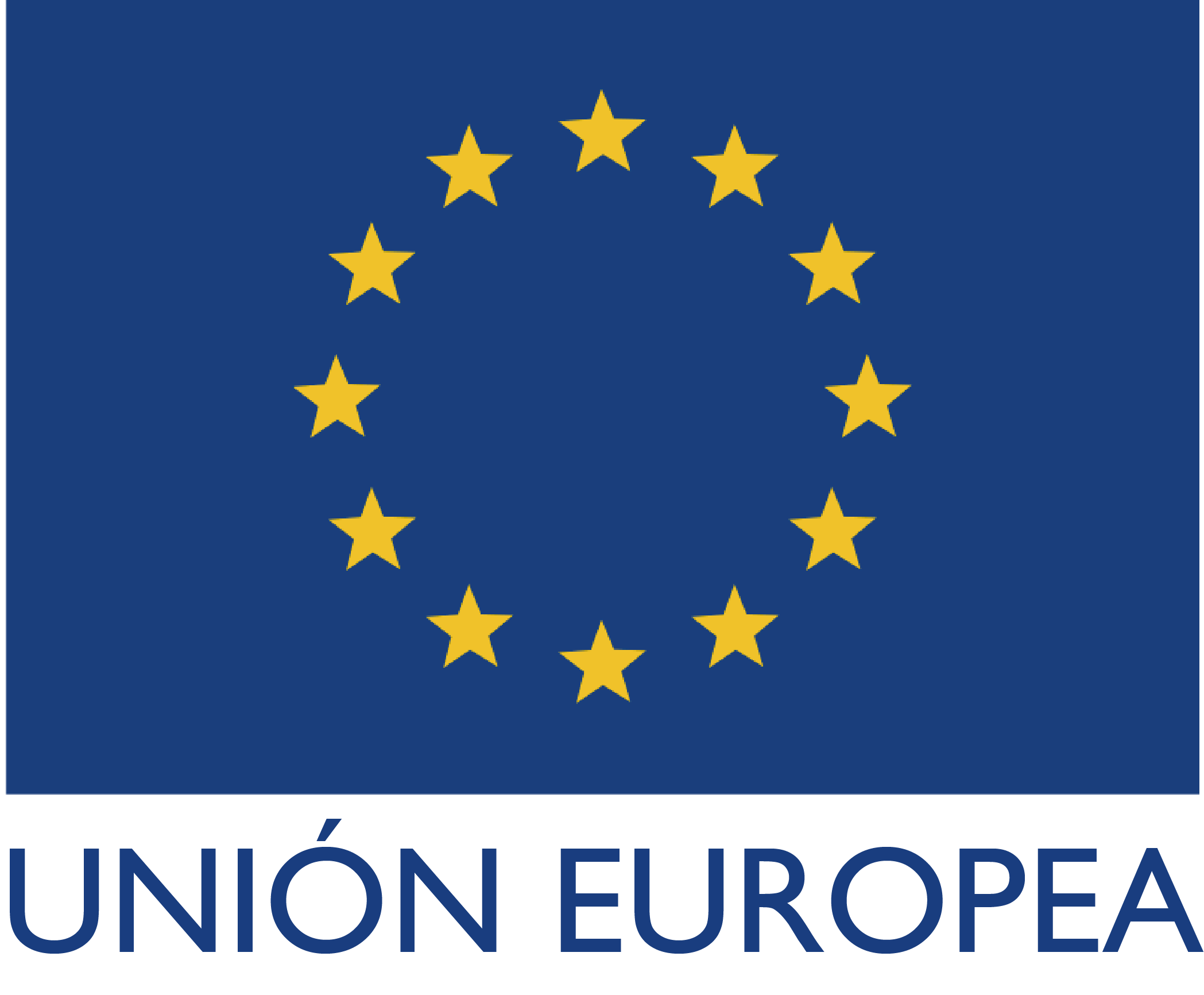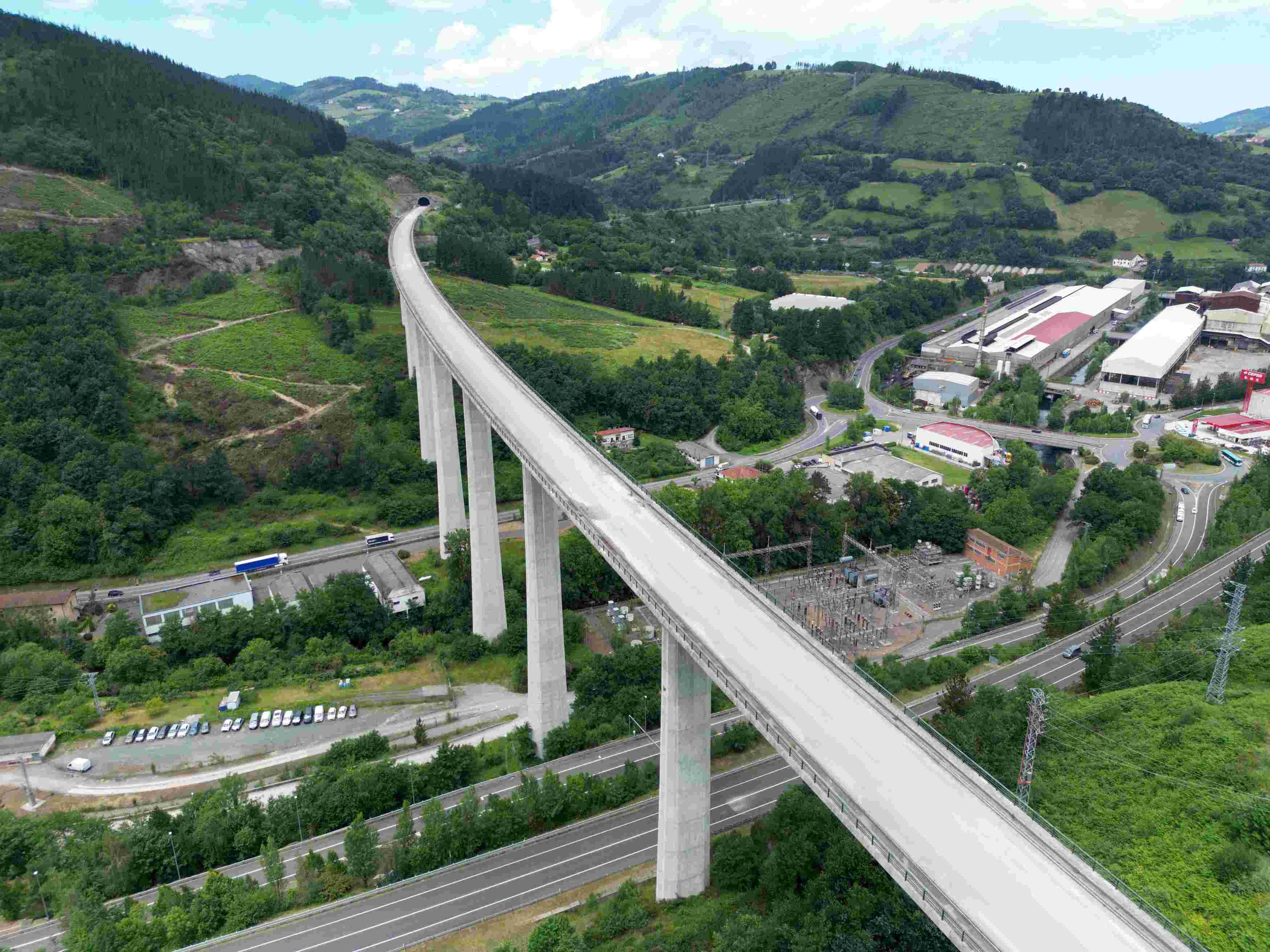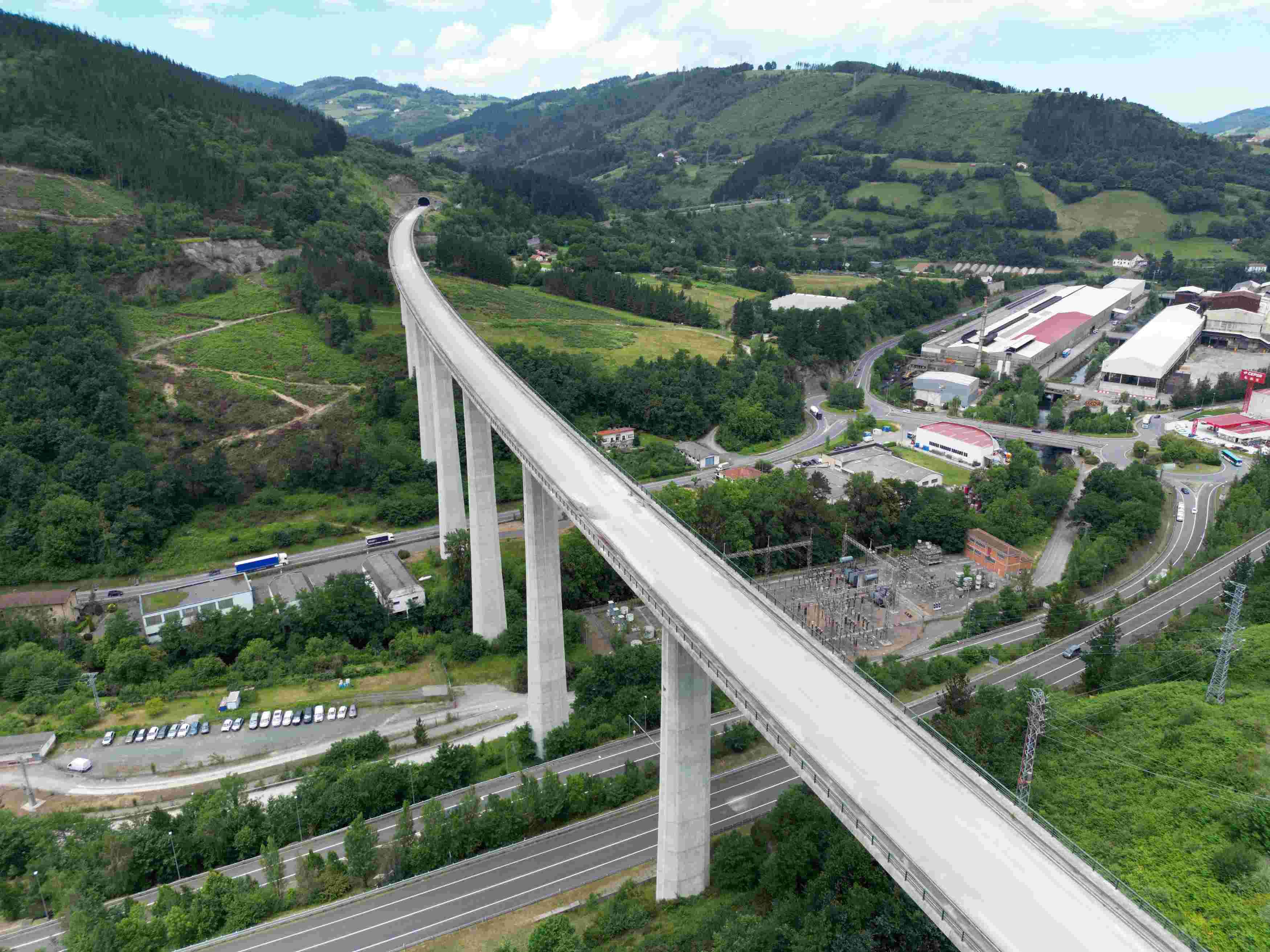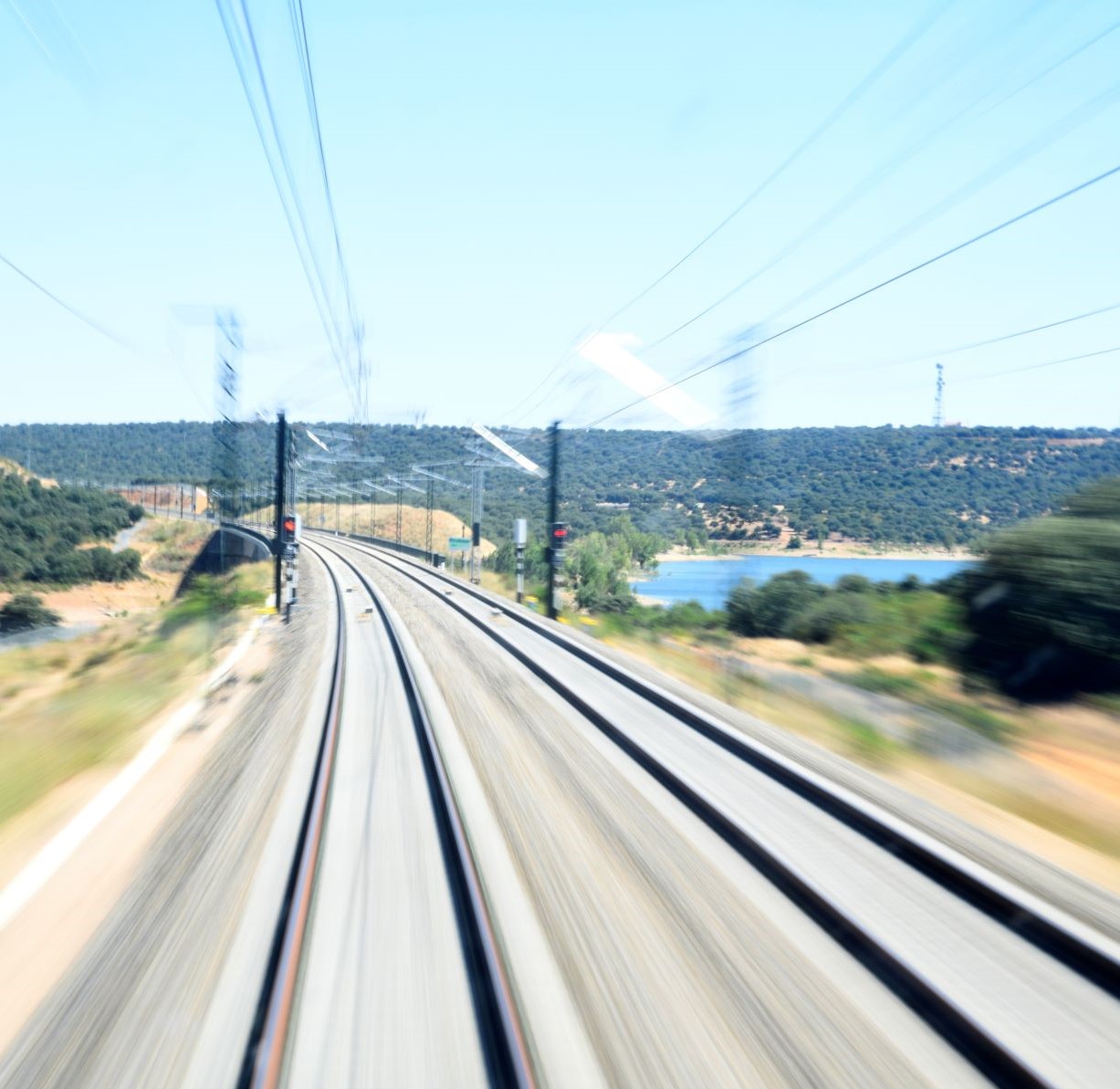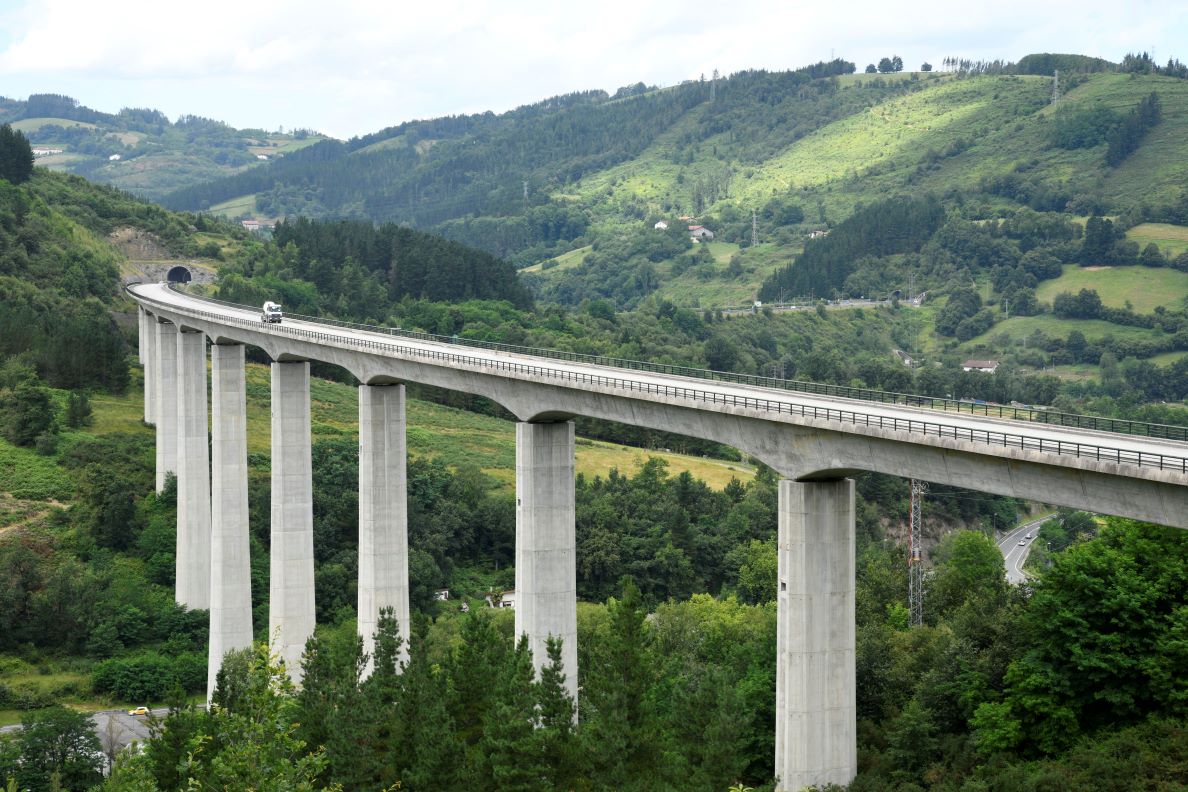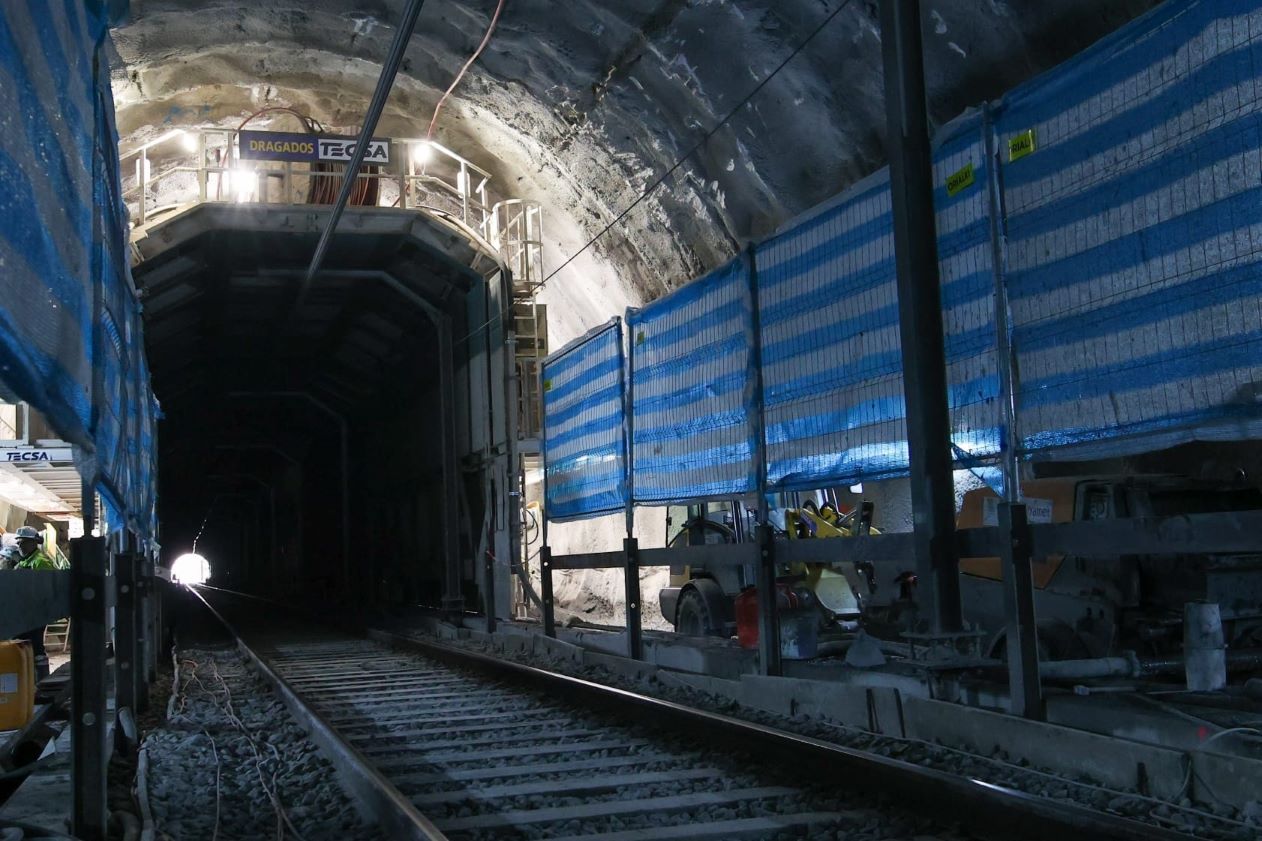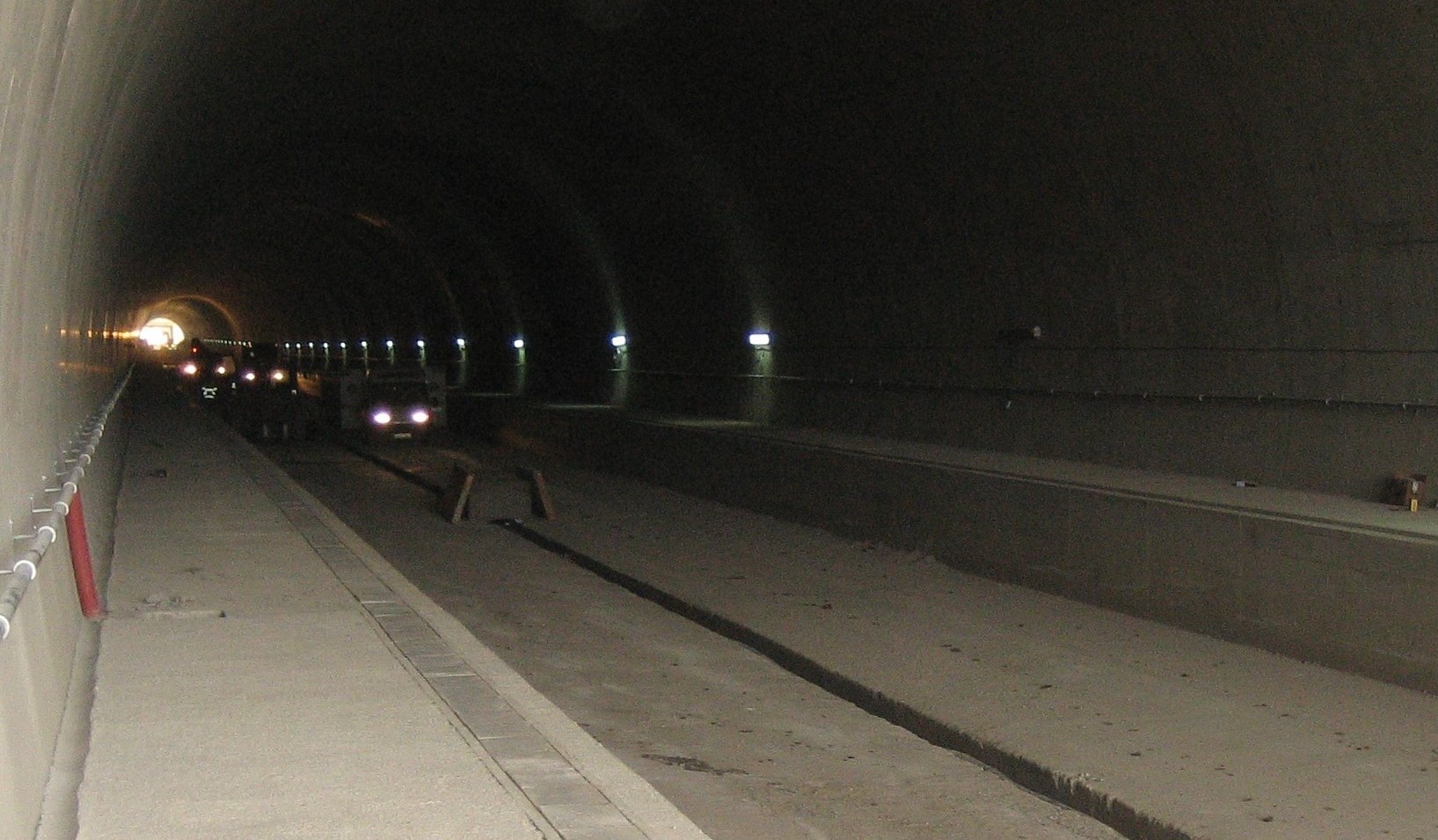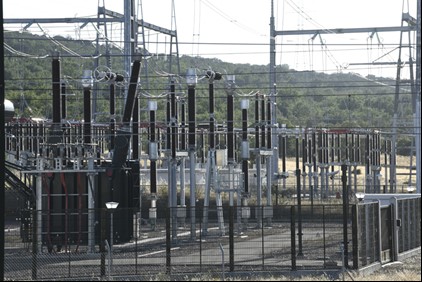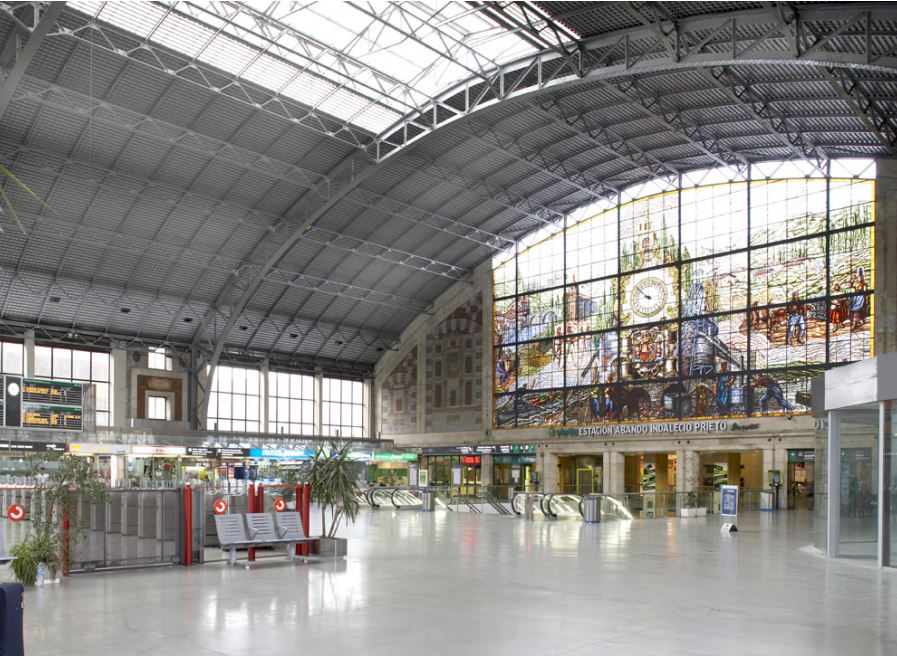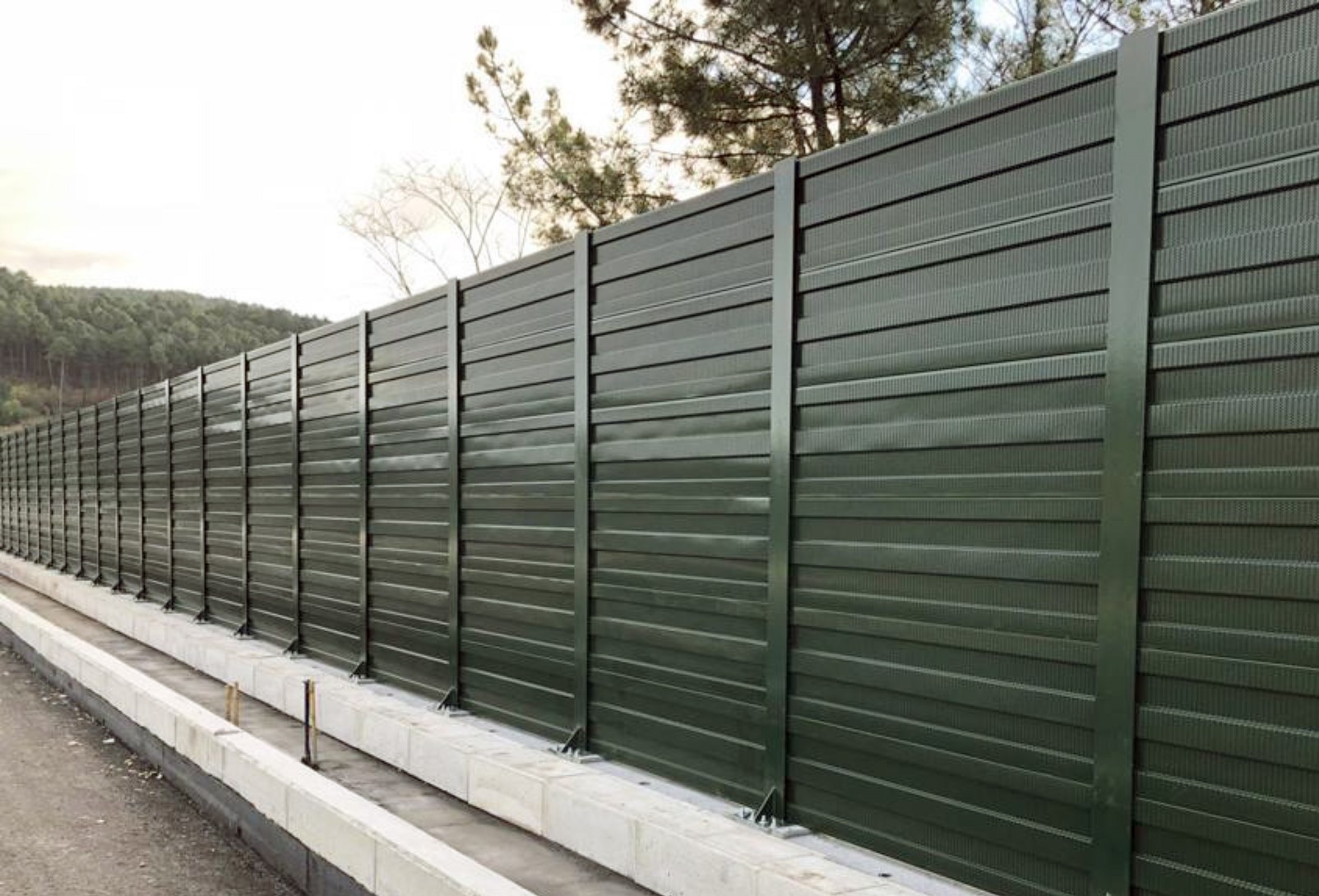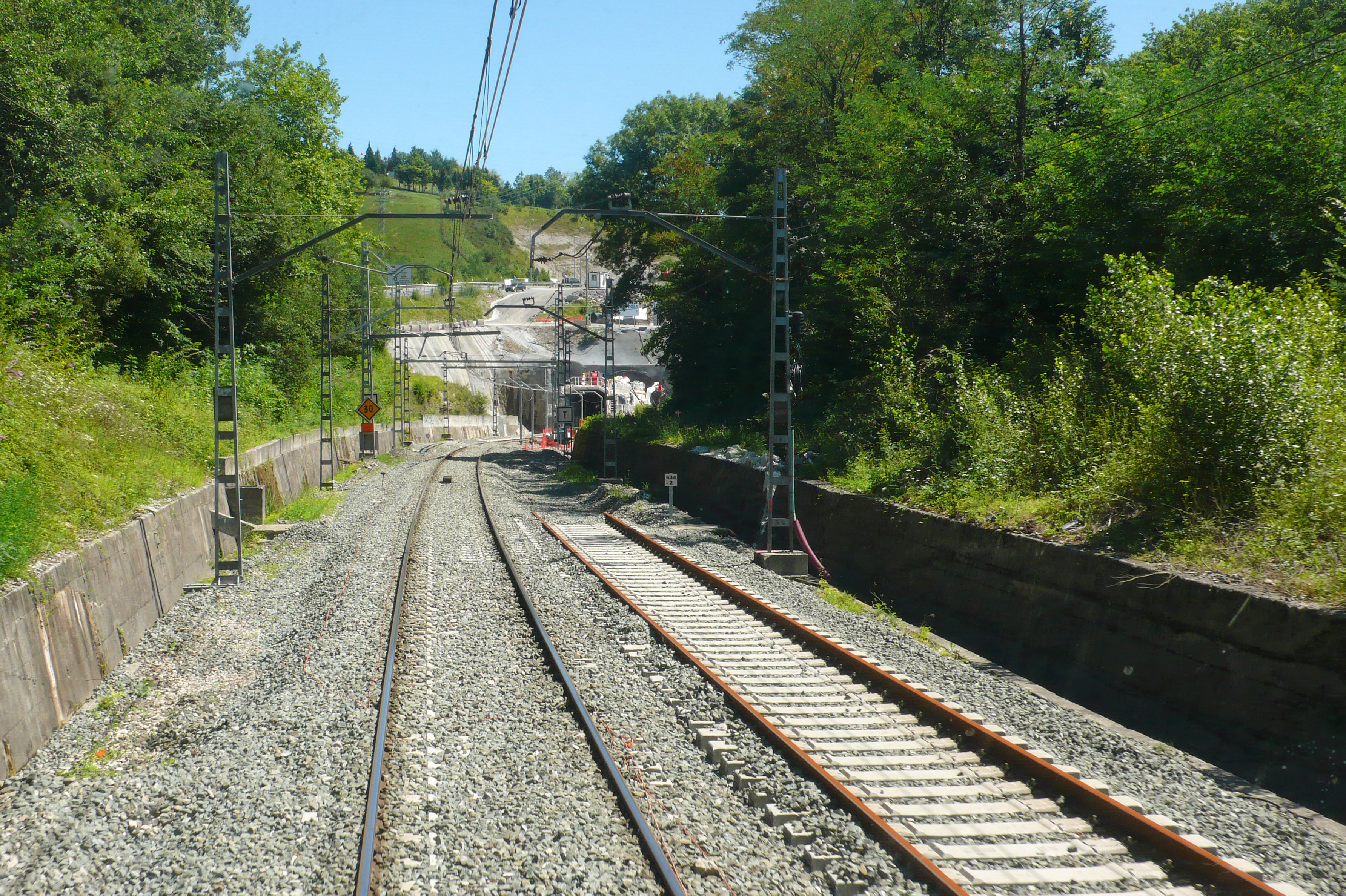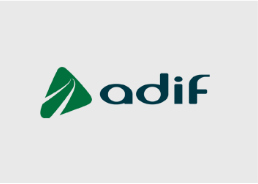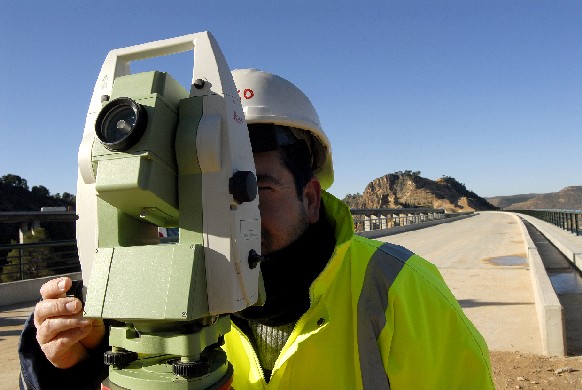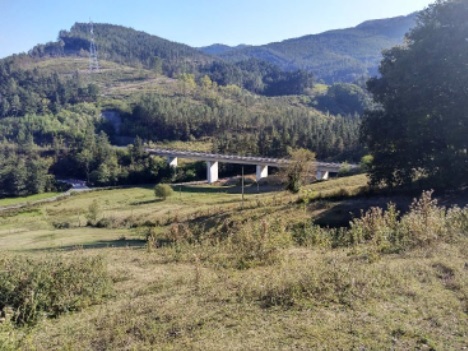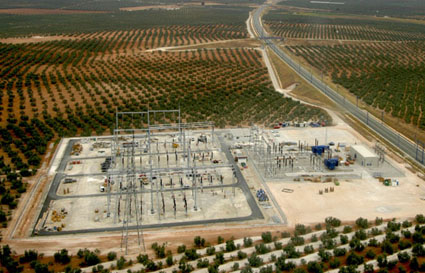Vitoria - Bilbao - San Sebastián - French Border Line
Main benefits of the line
Main benefits of the line
When in service, rail journey times between the three Basque capitals will be reduced drastically. Most notably, the Vitoria-Bilbao and Vitoria-San Sebastián journey times will be reduced by around 60 per cent, and the Bilbao-San Sebastian journey time by 80 per cent.
European Funding
"A way to make Europe"
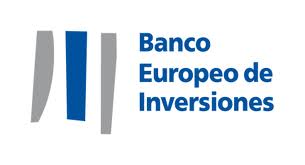
Characteristics of the route and unique works
Adif se encarga de la redacción y ejecución de los proyectos de plataforma entre Vitoria-Gasteiz y Bilbao, y los correspondientes a la integración del ferrocarril en ambas ciudades. Además, realizará la redacción y ejecución de los proyectos de plataforma de los tramos correspondientes al nudo ferroviario Mondragón-Elorrio-Bergara.

Acuerdo de colaboración
This includes the section that integrates the railway in the city of San Sebastián. The section corresponding to Irun, which is not included in the informative study of the Basque 'Y' and which forms part of the international connection, will be developed by the Ministry of Development
. Adif is also responsible for the track assembly, electrification, signalling, communications and other installations along the entire line.
It has been designed with the technical parameters of a high-speed line, on double track of UIC gauge, with curves of a minimum radius of 3,100 m and maximum gradients of 15 thousandths of a metre, and for mixed traffic, which will allow the circulation of passenger and freight trains.
Trains will be able to reach a maximum speed of 250 km/h.
In order to overcome major difficulties in crossing mountainous terrain, a great number of special structures have to be built. Viaducts and tunnels represent 60% of the Vitoria-Bilbao section, while in the case of the Gipuzkoa branch (including the Mondragón-Elorrio-Bergara rail junction to be undertaken by Adif) this proportion rises to around 80%.
The average number of unique structures along the entire line, be they tunnels or viaducts, is 70% of the route.
Some of the most important tunnels are:
- Albertia Tunnel: 4,786 m (2,680 metres of double bore),
- Udalaitz Tunnel: 3,185 m
- Zarátamo Tunnel: 2,728 m
- Induspe Tunnel: 2,224 m
- Galdakao Tunnel: 1,827 m
- Ganzelai Tunnel (1,365 m)
- Luko Tunnels (970 m)
- Viaduct over the A-2620 road:1,401 m with piers up to 90 m high.
- San Antonio–Malaespera Viaduct: 837 m
- Mañaria Viaduct: 616 m
- Viaduct over the A-3002 and N-1 roads, and the Zadorra River: 505 m
- Viaduct over the GI-3343 road: 471 m
Algunos de los túneles más destacados son:
- Túnel de Albertia: 4.786 m (bitubo de 2.680 metros)
- Túnel de Udalaitz: 3.185 m
- Túnel de Zarátamo: 2.728 m
- Túnel de Induspe: 2.224 m
- Túnel de Galdakao: 1.827 m
- T. Ganzelai (1.365 m)
- Túneles de Luko (970 metros)
- Viaducto sobre la carretera A-2620: 1.401 m y pilas de hasta 90m de altura
- Viaducto San Antonio–Malaespera: 837 m
- Viaducto de Mañaria: 616 m
- Viaducto sobre la carretera A-3002, N-1 y río Zadorra: 505 m
- Viaducto sobre la carretera GI-3343: 471 m
Tramo Vitoria-Bilbao
El trazado de 90,8 km que construye Adif entre Vitoria y Bilbao cuenta con un total de 44 viaductos y 23 túneles. El 20 y el 40 por ciento, respectivamente, de la longitud de todo el tramo discurre por estas estructuras.
Entre las infraestructuras del ramal construido por Adif, destacan el túnel de Albertia, que con 4,8 km es el más largo del proyecto y el viaducto sobre la carretera A-2620, de 1.400 metros de longitud y pilas de hasta 90 metros de altura
Galería de imágenes de la Y Vasca
Galería - Y Vasca
- Túnel de Angiozar. Estructura singular, que incluye un túnel artificial de 200 metros de longitud y tres bocas para la salida a la superficie de los túneles de Udalaitz Este, Udalaitz Oeste y Kortazar en dirección Bergara. Su ejecución ha sido un reto técnico por ser común a los tres tubos, por el escaso espacio existente entre los hastiales de los túneles y por desarrollarse en una zona con escasa cobertera que, además, está atravesada por una falla geológica. Julio de 2024.
- Viaducto de Goikoa. La longitud del trazado en altura del nudo es sensiblemente inferior al subterráneo, aunque se acerca a los 4.000 metros. En los seis tramos del nudo se han construido o se construyen 14 viaductos para salvar el relieve y los cauces fluviales de la zona, localizándose sobre todo en la provincia de Bizkaia. Julio de 2024.
- Obras en el viaducto de Arrazola, uno de los viaductos más largos de la línea con 1.755 m. de longitud. Julio de 2024.
- Obras en el viaducto de Arrazola, uno de los viaductos más largos de la línea con 1.755 m. de longitud. Julio de 2024.
- Obras en el viaducto de Kortazar. Julio de 2024.
- Viaducto de Bergara. Julio de 2024.
- Viaducto sobre la A-2620. Julio de 2024.
- Viaducto Kinatoi. Perteneciente al tramo Elorrio-Atxondo, está situado a unos 50 metros de la boca norte del túnel de Urdalaitz y cruza sobre el valle del mismo nombre y el barrio de Iguria, al sur de Elorrio. Con 880 metros, es el de mayor longitud del nudo de Bergara y el segundo de Bizkaia. Diciembre de 2023.
- Vista aérea de las obras en 2023.
- Vista aérea en 2023.
- Karraskain Oeste Emboquille Norte. El trazado del nudo es mayoritariamente subterráneo. Los tres lados del triángulo están formados principalmente por cuatro grandes túneles, pero también Otros de menor longitud son los túneles de Karraskain Oeste (543 m), Karraskain Este (448 m), Karraskain (437 m) y Zumelegi (279 m). Mayo de 2023.
- Udalaitz Este: Bóveda. Montaje de la armadura puesta. En total, el proyecto del nudo lo componen 15,3 kilómetros de túneles de vía única y 7,1 kilómetros de túneles de vía doble. Los principales son los denominados Udalaitz Oeste y Udalaitz Este, con cerca de 7.000 metros de longitud cada uno, y Kortazar y Udalaitz, con más de 3.000 metros. Junio de 2023.
- Impermeabilizacion de la galería de evacuación. El trazado del nudo es mayoritariamente subterráneo. Los tres lados del triángulo están formados principalmente por cuatro grandes túneles y otros túneles menores, a los que hay que sumar 22 galerías de evacuación construidas entre los distintos tubos.
- Pantalla de micropilotes. La cimentación es mixta, con zapatas y micropilotes.
- Viaducto de Zabaleta Larrazabal. La longitud del trazado en altura del nudo es sensiblemente inferior al subterráneo, aunque se acerca a los 4.000 metros. En los seis tramos del nudo se han construido o se construyen 14 viaductos para salvar el relieve y los cauces fluviales de la zona, localizándose sobre todo en la provincia de Bizkaia. Diciembre de 2023.
